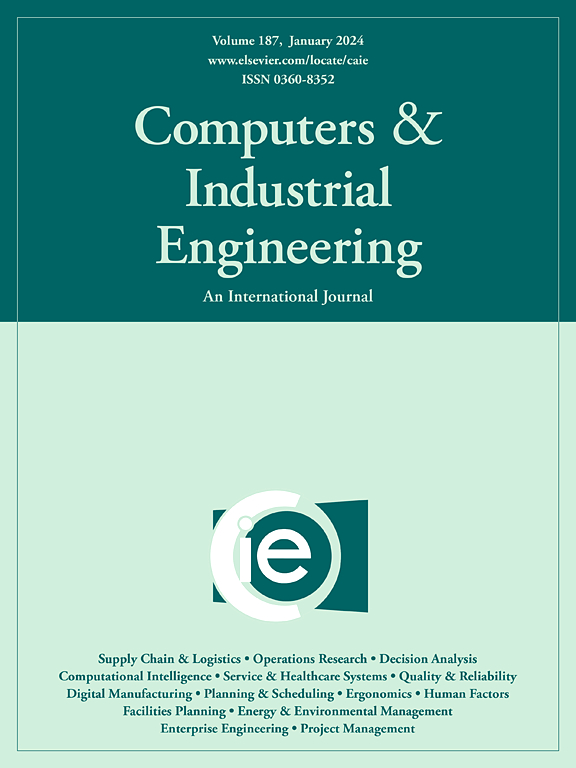A data-driven optimization model for the scattered storage assignment with replenishment
IF 6.7
1区 工程技术
Q1 COMPUTER SCIENCE, INTERDISCIPLINARY APPLICATIONS
引用次数: 0
Abstract
Modern warehouses are transitioning from pure storage facilities to order fulfillment centers. To improve order-picking efficiency, picking areas are restricted to small zones to save picker travel distance and thus can only store a limited quantity of SKUs. As a result, replenishment must be frequently carried out which not only causes intensive working efforts but also impacts the order-picking efficiency. Despite of the important role of replenishment, it has been seldom considered in storage assignment planning. This paper proposes a novel optimization model for the storage assignment problem considering both the order-picking and replenishment operations. Instead of the traditional first-extract-then-optimize paradigm, we develop an effective solution method for the problem by integrating the extraction and optimization steps together to avoid the loss of information. Intensive experiments and a case study are presented, the results of which indicate significant advantages of our model against the state-of-the-art counterpart. Several managerial implications are derived: (1) Order data implies substantial useful information for storage assignment planning, including but not limited to the demand correlation of products; (2) The replenishment efforts are intensive and negatively correlated to the order-picking efforts, which therefore should not be neglected in storage assignment planning; (3) To minimize the total working efforts, the optimal replenishment level of the replenishment policy should be more than but less than with respect to each SKU.
求助全文
约1分钟内获得全文
求助全文
来源期刊

Computers & Industrial Engineering
工程技术-工程:工业
CiteScore
12.70
自引率
12.70%
发文量
794
审稿时长
10.6 months
期刊介绍:
Computers & Industrial Engineering (CAIE) is dedicated to researchers, educators, and practitioners in industrial engineering and related fields. Pioneering the integration of computers in research, education, and practice, industrial engineering has evolved to make computers and electronic communication integral to its domain. CAIE publishes original contributions focusing on the development of novel computerized methodologies to address industrial engineering problems. It also highlights the applications of these methodologies to issues within the broader industrial engineering and associated communities. The journal actively encourages submissions that push the boundaries of fundamental theories and concepts in industrial engineering techniques.
 求助内容:
求助内容: 应助结果提醒方式:
应助结果提醒方式:


